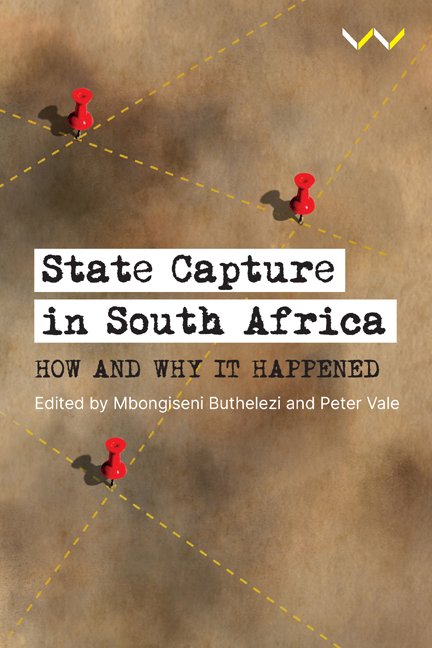Chapter 8 - State Capture and the Popular Imagination: Narrowing the Narrative
Published online by Cambridge University Press: 28 February 2024
Summary
If one is living in an abnormal society, then only abnormal expression can express that society.
— Dambudzo Marechera, Cemetery of MindTexts – whether films, paintings, poems or songs – always frame a particular picture of the world. They make witting and unwitting choices about which slices of reality to depict, and which slices to omit. On those rare occasions when texts pierce the popular imagination, they can create ‘collective social understandings’ that universalise these ‘particular ways of seeing’ (Storey 2018, 4). The political impact of texts, then, is heightened in proportion to their social reach.
This chapter focuses on the ‘particular ways of seeing’ encapsulated in popular artistic representations of state capture between 2012 and 2019. It explores how state capture was presented in paintings, non-fiction films and rap songs, and investigates how various South African publics responded to these artworks. It does this by highlighting work that gained heightened public attention.
Each section involves a close analysis of between two and five works, which are read against news articles and scholarly criticism in the state capture era. Through a combination of art, film and lyrical criticism, these sections trace links between popular art and the popular political imagination and investigate the relationship between the aesthetics of state capture and its politics.
To achieve this, I explore a single claim: popular art in South Africa narrowed the meanings of state capture between 2012 and 2019. It did this by confining the notion to a limited time period and restricting its actors to Jacob Zuma and the Gupta family, thereby obscuring state capture's structural and historical roots. As such, popular art suffered from – and simultaneously co-produced – a narrow conception of state capture, which oversimplified events of the late Zuma presidency and produced an ideology rather than an understanding of the notion. While these works seized unprecedented public attention, they also presented a binary conception of state capture.
THE DOMINANT NARRATIVE
Five features characterise what we will call the ‘dominant narrative’ of state capture. Firstly, it confines the notion of state capture to the late years of Zuma's administration (2012–2018).
- Type
- Chapter
- Information
- State Capture in South AfricaHow and Why It Happened, pp. 175 - 196Publisher: Wits University PressPrint publication year: 2023



